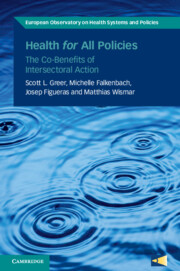Natural Disasters
Climate change will continually increase natural disasters, particularly hurricanes and wildfires (Intergovernmental Panel on Climate Change, 2021; Reference 249ShuklaShukla et al., 2019). Major disasters cause acute health impacts, notably from injury during flood-events (Reference Blake and ZelinskyBlake & Zelinsky, 2017), and direct damage from smoke and particulate matter inhalation in the case of wildfires (Reference Bowman and JohnstonBowman & Johnston, 2005). Natural disasters also amplify infectious disease risk while simultaneously disrupting access to health services (Reference SharmaSharma et al., 2008; Reference Willison and HolmesWillison & Holmes, 2020). When disasters force people from their homes, they often gather in congregate facilities. Group housing presents high-risks for contagious diseases, such as influenza or noroviruses (Reference Loebach and KorinekLoebach & Korinek, 2019). Hurricanes and flood-related disasters provide ideal breeding situations for arthropod-disease-vectors, causing outbreaks in the weeks and months following the disaster (Reference BeattyBeatty et al., 2007). Finally, disaster events can cause or exacerbate chronic health conditions. Notably, particulate matter from fires can increase chronic respiratory and cardiovascular disease (Reference Liu, Pereira and UhlLiu et al., 2015). Hurricanes and flood-events account for direct, indirect, acute and chronic adverse health effects primarily related to: behavioural health challenges, socioeconomic loss, infrastructure damage (mould, housing loss), and contamination from pollutants during storm surges (Reference Waddell, Jayaweera and MirsaeidiWaddell et al., 2021).
Natural disasters: the role of health systems and evidence-based actions
Health systems can act as policy implementors by investing in green buildings and greening open spaces in health care infrastructure, mitigating the acute impacts of climate-driven natural disasters. Urban greening, particularly with broadleaf trees, can reduce particulate-matter-density in the air (Reference DengDeng et al., 2019; Reference LeiLei et al., 2021) exacerbated during climate-driven disasters including heat waves and wildfires. Urban greening also increases surface permeability, slowing down runoff during flood-related disasters and reducing risk of contamination with sewage or other dangerous substances (He et al., 2019; Li et al., 2018).

